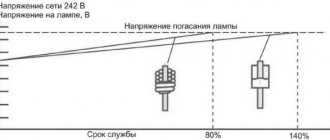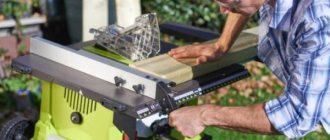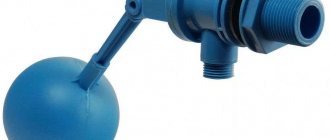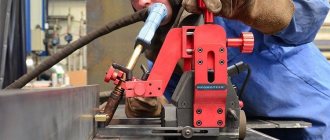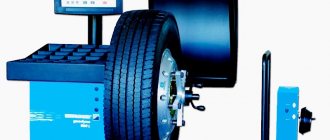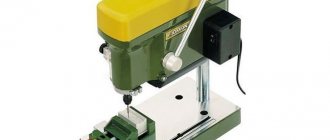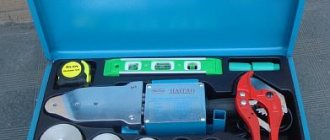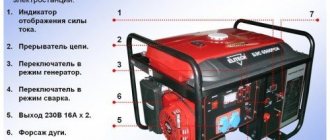The current generation of “lefties” rarely uses a blowtorch, preferring an electric industrial hair dryer or a gas burner, which are much easier and safer to use. But even 40-50 years ago, a blowtorch was in almost every home workshop of a mechanic or car enthusiast, since it was the only tool capable of heating various materials to the required temperature.
A blowtorch burns gasoline in a nozzle, producing a fairly large stream of open flame.
But it’s still not worth scrapping a blowtorch in our age of scientific and technological progress. For example, it is almost impossible to light a gas burner in severe frost. The situation with an industrial hair dryer is no better: it requires a constant source of electricity to operate. And an old blowtorch doesn’t care about all these difficulties.
What is a blowtorch
The blowtorch was invented in 1880. And since then it has not lost its popularity, but has only improved its application. The device heats objects by burning a certain substance.
To operate the unit, gasoline, kerosene, alcohol or another composition is used. The peculiarity of this heating device is its maximum energy output while using a minimum of fuel.
The lamp is characterized by its low cost, versatility and ease of use. Therefore, it has not left the shelves of specialized stores for many years.
Despite the widespread availability of electric industrial hair dryers and portable gas torches, a blowtorch remains a simple, convenient and economical way to properly heat something. Until quite recently, anyone who had the slightest ability to work with their hands could light a blowtorch. Nowadays, technical forums are literally filled with questions - how to ignite a blowtorch, why does the blowtorch not work? Let's try to understand this issue in as much detail as possible.
The use of fossil fuels to produce energy has been known since ancient times. Liquid hydrocarbon fuels are especially convenient in this regard. Complete combustion of hydrocarbons should produce only carbon dioxide and water . But this requires that for every kilogram of fuel burned there must be a certain number of kilograms of air.
Ensuring this is not so easy. If you light, for example, gasoline in an open container, it will burn with an orange-red, fairly smoky flame, clearly indicating a lack of air. If air, or even better, pure oxygen, is forced into the torch, the flame will become blue, without soot and much hotter. a kerosene cutter works . A mixture of kerosene and oxygen is supplied to the torch burner, which leads to complete combustion and such a high temperature at which even steel melts and burns.
But for a DIYer, it might not be tempting to tinker with an oxygen tank or air compressor. Is it possible to make sure that the flame itself captures as much air as it needs? You can and this is exactly how a blowtorch .
A blowtorch is a heating device in which the heat of combustion of fuel, in addition to its main purpose, is used to evaporate the fuel supplied to the burner. That is, it is not the liquid fuel itself that burns in the blowtorch, but its vapors entering the combustion zone at high speed. The jet of fuel vapor captures the air around the burner, which ensures that a sufficient amount of oxygen enters the combustion zone.
The great thing about this process is that it is regulated automatically. The more fuel vapor is supplied to the burner, the higher the jet speed and the more air is captured. In some cases, there may be too much air, then it simply passes through the burner, reducing the temperature of the torch. But usually burners are designed in such a way that they cannot pass excessive amounts of air purely physically.
What can you use a blowtorch for?
Previously, a blowtorch was used almost everywhere where high heating of materials was required, because there was simply no other alternative. Now, in many cases, it is more rational to replace the blowtorch with a gas torch or an electric industrial hair dryer. It's easier and safer. But sometimes you won’t be able to reap the benefits of progress. For example, an industrial hair dryer cannot be used in the absence of electricity, and a liquefied gas burner is almost impossible to light in the cold. After all, a blowtorch may already have been in the household since time immemorial, but other tools will have to be purchased. Therefore, the blowtorch still has a wide field of application. A blowtorch is most often used for:
- heating parts and melting solder, heating soldering irons during soldering
- welding materials with a melting point of up to 1000 degrees
- melting metals with a melting point of up to 800-900 degrees
- burning out old paintwork on metal objects
- heating frozen water in water and sewer pipes
- preheating internal combustion engines for starting at low temperatures
- dismantling old rusty threaded connections
- resinous wool on animal carcasses
What to put in a blowtorch?
Purely theoretically, you can pour into a blowtorch any flammable liquid - gasoline, kerosene, diesel fuel, alcohol, various solvents, oil. However, low-quality fuel with a large number of poorly evaporating components (for example, oil containing a decent amount of fuel oil) will quickly clog the injector, and then the entire evaporator. Therefore, you can only use high-quality purified fuel - alcohol, gasoline, kerosene .
The fuel must match the type of lamp . prohibited to pour unsuitable fuel into a blowtorch . The volume of the blowtorch evaporator is calculated based on the evaporation capacity of the fuel. If you pour kerosene into a gasoline blowtorch, it will not have time to evaporate in sufficient quantities, and the lamp will “spit” burning liquid and resemble a flamethrower. More serious consequences will arise when pouring gasoline into a kerosene blowtorch. The saturated vapor pressure of gasoline is six times higher than that of kerosene. When ignited, the entire volume of gasoline in the large evaporator will turn into steam, which will most likely lead to an explosion of the blowtorch.
only pure lighting into kerosene blowtorch , and in no case should it be mixed with any other fuel.
Pure gasoline is poured into a gasoline blowtorch . There is a lot of debate about which gasoline is better to fill in - low octane or high octane. The best type of gasoline for a blowtorch is highly purified gasoline-solvent such as “Galosha” or “Galosha” (Nefras S2-80/120). It is sold in hardware stores. However, for a large volume of work, such fuel will be too expensive.
motor gasoline is often used in blowtorches . The octane number of gasoline, which determines resistance to detonation, does not play any role in this case. More important is the purity of the fuel and the absence of various additives. From this point of view, preference should be given to low-octane fuel. It contains fewer impurities and pollutes the nozzle less. The octane number of gasoline does not have a significant effect on the speed of ignition and flame temperature.
Alcohol blowtorches usually have a small reservoir volume (up to 200-300 ml) and are used for small, for example, jewelry work indoors. It is now impossible to find an alcohol blowtorch on the market; in almost all areas of application, they have been completely replaced by miniature gas burners.
How does a blowtorch work?
Let's look at the general design of a blowtorch using the example of the LP-1.0 blowtorch from Caliber. It should be noted right away that the famous Moscow one has nothing to do with this lamp. The trading company was founded in 2001 and specializes in the sale of Chinese-made instruments. The company's catalog includes blowtorches LP-1.0, LP-1.5, LP-2.5, LP-3.5. The number in the name of the lamp indicates the capacity of the fuel tank in liters, otherwise the lamps are almost identical. And, despite a number of shortcomings, these lamps are quite functional.
Unfortunately, the instructions for use included with the LP-1.0 blowtorch can hardly be called comprehensive and thorough.
Nowadays, even toilet paper may have longer instructions, let alone such a potentially dangerous thing as a blowtorch. The instructions completely lack information on how to work with a blowtorch. Position 7 in the figure, indicating a fuel tank, but nevertheless entitled “Safety Valve,” is also puzzling.
The LP-1.0 lamp actually has something similar to a safety valve And this something is a threaded boss welded to the body, which houses a rubber gasket and a metal plug.
It is difficult to judge how much such a device is a safety valve, but it is better than nothing. In any case, it’s definitely not worth pumping the lamp.
Otherwise, the blowtorch is standard. Filling tank 5 with fuel is done through air pump 2. To do this, the pump nut is unscrewed and the pump is completely removed from the housing. The flow of fuel vapor into burner 4 is regulated by the handle of the shut-off needle 3. During operation, the lamp is held only by handle 1.
The lamp package also includes a set of accessories and spare parts in a paper bag.
Included with the lamp are: 1 – needles for cleaning the nozzle (quite a makeshift design), 2 – spare air pump cuff, 3 – spare nozzle, 4 – air pump gasket, 5 – emergency valve gasket
When purchased, the blowtorch burner, screwed into the tank along a thread with FUM sealing tape, turned quite easily, which created certain problems during operation. Therefore, the connection was disassembled and reassembled with a new seal.
How to light a blowtorch correctly?
It is necessary to work with a blowtorch outdoors. In exceptional cases, short-term work indoors is possible if there is good ventilation.
- The blowtorch is filled with pure gasoline (nefras) in a volume of no more than 3/4 of the tank volume. The remaining 1/4 of the volume, filled with air, allows you to create the necessary pressure in the tank and plays the role of a compensator when the lamp heats up.
- A slight excess pressure is created in the blowtorch reservoir (6-10 pump strokes).
- Pure liquid fuel is poured into the burner bath, burning without soot (theoretically, ethyl alcohol). Almost the same gasoline is poured into the burner bath as into the tank. After this, the fuel in the bath is ignited for the initial heating of the evaporator. During warming up, the lamp should be in a place protected from the wind.
- After the fuel in the tank goes out, the shut-off needle opens slightly. If there is a jet of fuel vapor, the torch is ignited. If a stream of liquid appears, the heating should be repeated. With some skill, the shut-off needle opens slightly exactly at the moment of extinguishing or shortly before the fuel in the tank goes out; re-ignition is not required.
- As the evaporator warms up, the fuel supply to the burner can be increased. To quickly warm up, the blowtorch can be placed with the nozzle to a massive non-flammable object (steel plate) with a gap of 2-3 cm.
- During operation, the size of the torch is regulated by the amount of fuel entering the burner using a shut-off needle. If there are interruptions in operation, an uneven torch, or the flame goes out, you should check the cleanliness of the nozzle and, if necessary, clean it with a cleaning needle.
- The blowtorch is extinguished by closing the shut-off needle. It is allowed to release the pressure and open the tank only after the lamp has completely cooled down.
Precautions when working with a blowtorch
A blowtorch is a flammable and potentially explosive tool. The blowtorch reservoir contains a flammable liquid under pressure, and the reservoir itself is located close to the burning hot torch.
When working with a blowtorch, it is prohibited:
- using the lamp when there is a fuel leak or its vapors
- using fuel that does not match the type of lamp
- prolonged operation leading to heating of the fuel tank above 50 degrees
- operation in the event of a malfunction of the safety valve or pressure gauge
- refueling, draining fuel, releasing pressure, opening the tank while the lamp is working or not cooled down. Opening the reservoir on a hot lamp is one of the most common causes of blowtorch explosions.
- working indoors without sufficient ventilation
Compliance with safety rules when working with a blowtorch is the key to effective and safe operation of the tool.
We recommend reading
- How to choose a knife for modeling?
- How to make a custom connector?
- Simple DIY key holder
- How to make an inscription on metal with your own hands? Electrochemical engraving
- What rod diameter should I choose for an external metric thread?
- What hole diameter should I drill for metric threads?
- Engraver with EVERISE attachment set
- Hot glue gun - home handyman's assistant
- How to choose a drill?
- How to drill correctly?..
How does a blow torch work?
The high temperature flame powers the unit. This is achieved after the starting substance ignites and gradually transforms into gas. Once oxygen appears in the nozzle of the device, a flame begins to form.
- In this case, the fuel container holds 100-200 ml. liquid substance (gasoline, kerosene, sports, etc.).
- Modern soldering devices can be adjusted by supplying fuel, which increases or decreases the flame and its temperature.
- According to customer reviews, gasoline-powered units operate best, releasing the most energy when the fuel is burned.
Important! Gasoline must have an octane number of no higher than 80. Technical types of fuel such as “Galosha” are also suitable here.
As for kerosene, it is slightly inferior to gasoline in terms of the amount of energy released. But it costs less.
If the above types of fuel emit an unpleasant odor when burned, then alcohol does not differ in the emission of an unpleasant odor. Alcohol fuel produces less energy than gasoline and kerosene. And it has higher consumption than gasoline or kerosene formulations.
Top 5. Express 8700
Rating (2021): 4.15
Maximum heating with minimum gas consumption The development of a universal type allows for both soft and hard soldering due to the high maximum temperature.
- Characteristics
Average price: 1800 rub.
- Country: France
- Tank volume: 19 ml
- Maximum operating temperature: 2010 degrees
- Nozzle metal: steel
- Repair kit: no
A very practical blowtorch model is designed for high-quality operation during construction and other work thanks to its powerful technical potential. It is excellent for soldering copper and tin in different diameters. It is acceptable to use copper-phosphorus, silver or soft solder as solder. The length of the acute flame reaches 17 cm, it is continuous and uniform. The reinforced metal tip can withstand a working pressure of 1.5 bar. In this case, the consumption of propane-butane is minimal compared to competing models, it is equal to 110 g/h. The wear-resistant steel tank has an optimal volume, which allows continuous operation for 1.15 - 1.30 hours. Disadvantages of the model - power is inferior to analogues (1.6 kW), increased body dimensions.
Advantages and disadvantages
- High temperature conditions are achieved
- Suitable for soft and hard solder
- Adjustable flame intensity
- Minimum gas consumption
- Compatible with several brands of puncture cylinders (0.19 L)
- Power is less than that of the leaders in the rating
- The large body is not suitable for hard-to-reach places
See also:
- 5 best spotters
What is a blowtorch for?
This device has a very wide application. The main thing is that safety precautions and temperature conditions are observed when using it.
The device operates using oxygen, which generates a draft of an open flame through the supply of fuel energy under pressure to the nozzle, where it is heated, evaporated and a flame is formed.
So, what is this device for:
- Disinfection of premises;
- Processing of poultry and cattle skins;
- Heating metal pipes and rods for subsequent deformation;
- Connection of elements that require temperatures below 1100 degrees;
- When dismantling premises (heating paint on the surface);
- In the winter season, to warm frozen metal water supply elements;
- To perform light burning of plants, helping to eliminate small pests;
- Cooking and heating food while camping (a special stand is required);
- Roofing installation (roofing felt);
- Ignition of various heating and decorative devices (fireplace, fire, wood stove);
- Heating elements and hammer soldering irons.
Gas burner: what is it and why is it needed?
This is a device that prepares a mixture of flammable gases, allowing the formation of a stable torch , which can be used to perform various types of work. The design of the burner and the type of fuel used allows you to control the intensity of the combustion process within wider limits than is possible when working with a blowtorch. The gas burner does not have a reservoir with a flammable mixture, which can explode if used incorrectly. The operating principle is simpler. The areas of application are wider, here are five main ones:
- For lighting . Despite the widespread use of electricity for these purposes, the need for gas lighting lamps has not completely disappeared. Now they produce many special models that give light to lovers of nighttime outdoor recreation.
- Gas burners for heating system boilers .
- For heating large volumes of air . For example, premises in the cold season or supplying a heated mixture of volatile gas into the balloon shell.
- For welding, soldering, surfacing and cutting of metals with a high melting point (more than 1100 °C).
- Gas burners for household and utility purposes . They are used both for cooking and in construction, repair or maintenance of equipment.
The wide range of applications of gas burners involves many design varieties, which differ:
- According to the method of mixing gas and oxidizer
- Type of fuel mixture supply.
- Type of fuel used.
Blowtorch design
A blowtorch includes the following elements. One of which is the fuel tank used for fuel. She is given the most space. It is sealed.
It is special in that it holds all the elements of the device. One of which is the handle needed to hold and carry the device.
It is located on the side of it. Next comes a pump with a valve, designed for manual use and through which pressure is created in the container of the device. At the same time, there are models combined with a filling neck into which fuel is also poured.
- After this comes a siphon tube, which supplies energy to the evaporator from the tank, and connects these parts into a single whole.
- Also, the element on which the rate of fuel supply to the evaporator depends and located behind the siphon tube is called a needle valve.
- The container in which energy is converted from liquid to vapor is called an evaporator.
- And the heating part from which the flame flies out is the ejector. It is a continuation of the evaporation system.
And the last thing the lamp consists of is a nozzle, which also belongs to the evaporator and sprays fuel towards the ejector located at the end of the U-shaped tube.
Instructions for use
Before you start using the lamp, you should carefully study the instructions on how to use it for any construction work. You can use such a device only after reading the basic instructions and instructions.
The device may only be used outdoors. If there is an urgent need, then you can use the device indoors, but it only needs to be turned on for a short time, followed by good ventilation.
When using the device, you must strictly follow all operating rules:
- Before using the device, you need to fill it with the required amount of fuel. Filling the device container should be one third of the total volume. The empty volume should be used to create pressure during operation.
- Increased pressure must be created inside the device using a specially built-in pressure pump device. To create pressure, you need to perform about ten unsharp pumping motions.
- After obtaining high pressure, you need to add fuel to the burner bath. For this purpose, it would be best to use alcohol, since such fuel will not produce a lot of soot. The fuel poured into the tank is ignited to ensure the initial heating of the heating pad evaporator. During combustion of fuel in the bath, it is necessary to ensure special protection of the device from exposure to drafts.
- At the end of the combustion process of the fuel located inside the tank, the tight needle valve opens. The fuel coming from the evaporator itself must be of the gaseous type - if fuel drops appear in the flow, the evaporator heating procedure must be carried out again.
- After receiving a stream of gaseous fuel, it should be set on fire. If necessary, the volume of incoming fuel material can be adjusted independently using the needle cap. To speed up the process of heating the burner, you can place the device against a metal sheet, at which time the total distance from the sheet to the burner nozzle should reach two to three centimeters.
- During operation of the device, you need to carefully monitor the state of the torch - you can increase or decrease it using a gap-type needle valve.
- If during use the device is unstable or combustion extinguishes frequently, then you need to clean the nozzle using a special needle.
- At the end of the work, it is worth extinguishing the torch in the device. The torch is extinguished by screwing the valve and lowering the needle itself. After the lamp itself has cooled, you can release the air from the container.
When using the device, you must follow all safety rules.
What is it made from?
Various alloys can be used for manufacturing. Basically, the device is made of steel, combining it with cast iron and brass. This is necessary to increase the reliability of the lamp capacity.
Handles are made of both metal and plastic combined with a metal alloy. The valve of the device is made of fire-resistant material (plastic).
Size range and weight
Lamp production mainly consists of 2-liter containers (290x160x275). Devices are also produced with other container volumes for fuel, which can be increased from 3.5 liters and above.
- For example, containers from 1.5 to 2.5 liters are produced for gasoline.
- For gas appliances from 0.022 l.
- The mass of such a device without fuel is 1.5-2.5 kg.
- This should also be taken into account when purchasing a lamp (if you need a lighter option).
Advice! When choosing a lamp, you should pay attention to its diameter. The larger it is, the better the excess pressure will be injected, and therefore the operation of the device.
The units are produced mainly with a fuel tank diameter of 100-145 mm.
Types of blowtorches
Manufacturers offer the following types of lamps:
- Gasoline devices. Most popular product. They are presented in a classic layout, consisting of a container for fuel and a fixed burner installed on top or a remote version. The device creates a flame temperature of more than 1000 C;
- Kerosene devices. The appearance of the device is partially the same as the above version, the nozzle is different, which has a larger diameter. The device is also equipped with an ejector with a coil, due to which the fuel is heated at lightning speed. Used for melting solders and heating large soldering irons;
- Alcohol devices. They stand out for their low demand and container volume for fuel up to 200 ml. They are mainly used in jewelry workshops for soldering products;
Gas devices. Feature – refilled using a disposable or refillable cylinder. The body is made of both metal and plastic. Of all these options, it has the highest cost.
This lamp can be used in any activity. It is also easy to move or use by connecting it to a cylinder via an extension hose.
The best models of blowtorches
Based on customer reviews, a list of the best lamp models was compiled.
SIBIN 40670
This is a lamp used for refueling with gasoline. It has small dimensions, but performs all the functions that depend on it. The flame is regulated by a valve, and uninterrupted operation is ensured by a steel ejector and a protective casing.
The device saves fuel well thanks to a well-functioning supply system. Caring for the device does not take much time. It is enough to clean the nozzle with the needle included in the lamp kit.
BARS 91452
The device stands out for its universal use and fast heating. The device nozzle is easy to clean. Since it is located on the outside and can be removed.
Features a long service life.
- Gasoline grades 92 and 95 are used as fuel. The lamp is not afraid of either wind or moisture.
- The only thing that doesn’t suit buyers is the difficult process of setting the flame power.
BISON PROFESSIONAL – SAMOTLOR
The device originates from the USSR, but is still used today. It is easy to use, thanks to the ejector made of cast iron. After all, this element gives the device advantages in maintaining a constant temperature and slow cooling of the unit. Refers to soldering devices.
Can be used at any temperature. Cons: loud operation and frequent clogging of the nozzle.
1 DREMEL Versaflame 2200-4
One of the best options for multifunctional stationary blowtorches. You can use an open flame with a catalyst and a soldering attachment. A nice feature is its interesting design and wide functionality. Powered by liquefied butane. For convenience, the model is equipped with piezo ignition. Used for welding, soldering, heat shrinking. With a reservoir capacity of 22 grams, the device operates in intensive mode for about 75 minutes.
There are many useful options - child lock, removable leg for stationary operation, flame level lock, temperature mode selection. The kit includes several attachments - for soldering and torch extension. In terms of functionality, the lamp resembles a professional model. Users note the ease of recharging, very short heating time, and ease of use. The only downside they name is the fairly high cost.



